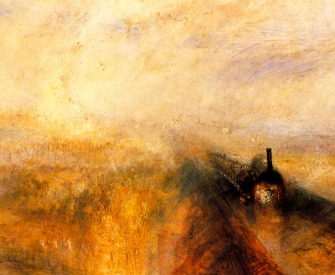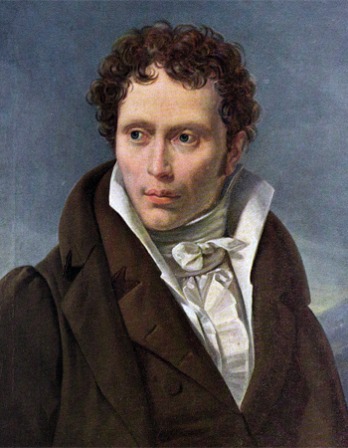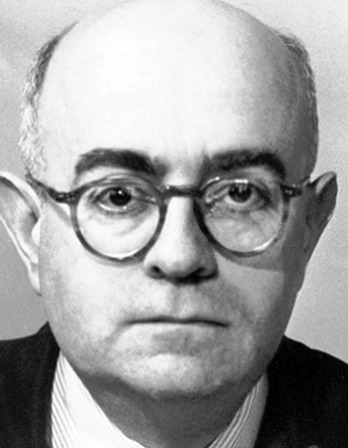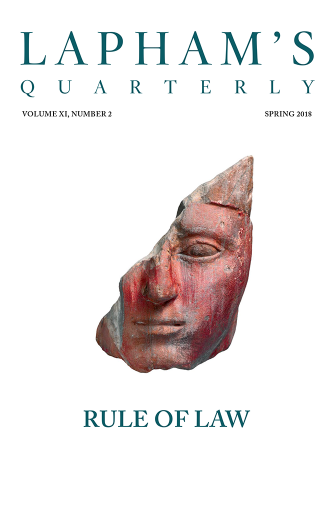Some nights are like honey—and some like wine—and some like wormwood.
—L.M. Montgomery, 1927Nocturnal Howling
Night escapes definition, but it terrifies nonetheless. A tour of the terror and joys of the darkness.
By Philippe Petit
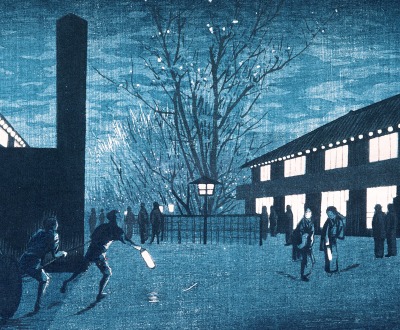
Night View of Cherry Blossoms in Shin Yoshiwara, by Inoue Yasuji, 1889. The Los Angeles County Museum of Art, gift of Mr. and Mrs. Felix Juda.
The forest had grown thick with darkness. From our swimming hole to the clearing where we had pitched our tents, I knew the path well: half a mile of straight and wide dirt road cutting through the woods, a welcoming promenade we had explored all week in daylight.
But tonight, the last night of our Boy Scout summer camp, we received our leader’s closing challenge with goose bumps: eight kids were told to go one by one through the forest, reach the camp, and blow their whistles. Alone. In the dark. No flashlight.
My best friend was first. He made it. I heard his whistle.
I’m next. Our leader, a gentle old priest, rests his hand on my shoulder to wish me luck and orders softly, “Now go, walk!”
The path has narrowed into a treacherous trail snaking between two cliffs of black Chinese ink. I have not moved, yet the journey is terrifying. Against my will I manage a few steps. Once I sense obscurity has eclipsed me from the others, I run, frozen in fear.
The monsters howled at me but were left empty-clawed—I was too fast.
Why was I afraid of the dark, tormented by night? An answer in the form of a conversation between day and night.
Day: Oh, I can answer that.
Night: Sure, you’re so bright.
Day: And you’re dark.
Night: You are early.
Day: You are late.
Night: Why do you exhaust people all day?
Day: Why do you force them to lay unmoving all night?
Night: You are so transparent!
Day: Yes, no nonsense here. With me a cat is a cat.
Night: With me—beware—a dog might be a wolf, but I offer mystery.
Day: Mystery and crookery and murder and nightmare and hundred-year-long sleep and even death.
Night: So boring you are.
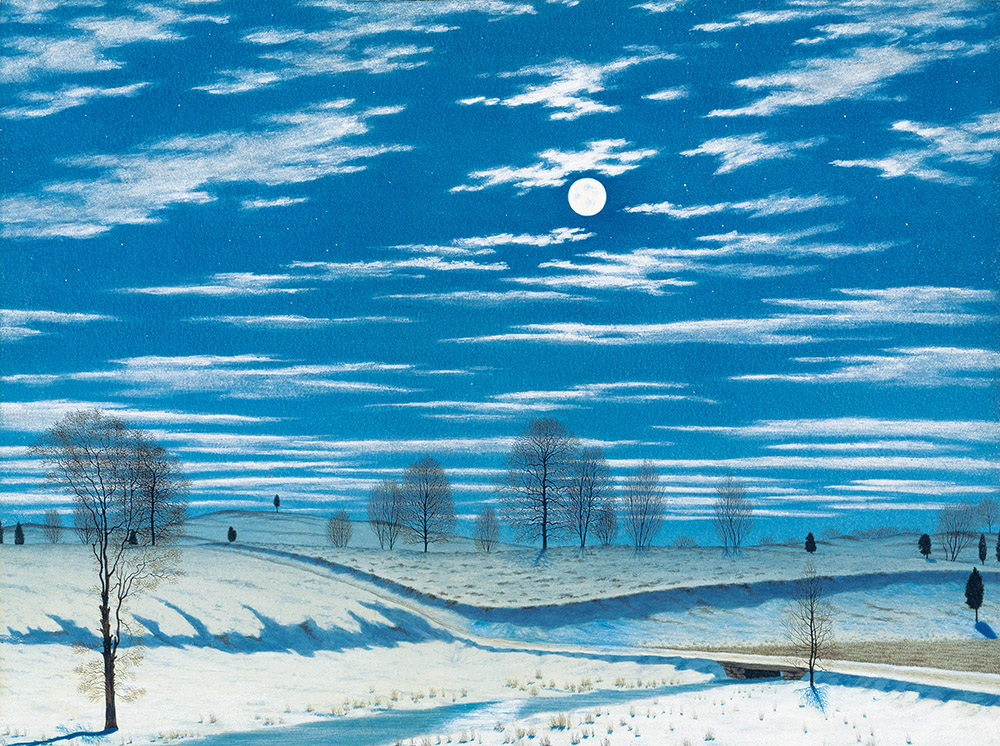
Winter Scene in Moonlight (detail), by Henry Farrer, 1869. The Metropolitan Museum of Art, Purchase, Morris K. Jesup Fund, Martha and Barbara Fleischman, and Katherine and Frank Martucci Gifts, 1999 (CC0).
Day: Not always. Have you seen the diaphanous daydreaming mist and fog I am known to produce? Of course not. Your eyes are closed when I work.
Night: You will never compete with my festival of wonders!
Day: The seven wonders of the world were built under my light.
Night: And maybe Shakespeare was an insomniac whom I protected with my cloak while he created by candle glow till foredawn?
Day: Why do you always chase me? Is that where you get the light for your stars—from me? And the reason we’re competing?
Night: You’re right, distant cousin. Peace.
Day: I have to go now, I’m retiring soon.
Night: As do I, I’m about to be reborn. Good day, sir.
Day: Good night, lady.
Night escapes definition. Night is symbol of herself. Night is elusive poetry. A silent phoenix. “We like to think we live in daylight,” writes Ursula K. Le Guin, “but half the world is always dark; and fantasy, like poetry, speaks the language of the night.” But I ask you: Who is night?
Language
In many languages, including French, Spanish, Russian, the day is masculine, the night not. What made night a female being? My Oxford English Dictionary reminds me that besides being a she, she started as a deity. Feminine because night is the mother of our well-being, bringing forth rest and congeniality? Because night is breastfeeding us memories from the future—memories we like to call dreams? Because night means not going out hunting buffalo? Because night cares about us all night? Because night is curing the day’s wounds?
The polyglot in me reflects on translate the day, interpret the night: night’s language is elusive. Night keeps her words in orbit for all to catch, demands an intimate relationship with a trusted word juggler rather than a law-abiding translator.
Numbers
“Night hath a thousand eyes,” writes John Lyly. There are a million nights in our imagination. One Thousand and One Nights tells the tale. But it takes only one night to never wake up.
Perspective
Our take on the night is ravenously personal. This essay tells of my night. I can only write about the night that is my friend, my foe, my accomplice, my lover, my enemy. You will hopefully grant me full pardon here. I hope to open the door for you to meet and negotiate with—and maybe seduce—your own nights.
Definitions
I found: “Between day and day, the period of darkness which intervenes is called night” (but then one needs to define day). And: “Night is when no light is received from the sun” (then during a solar eclipse, is it night?).
In my cosmogony, from living chaos, a bounded space, emerged darkness and night. No wonder upon leaving life we dread the transport of our soul over the river Styx to the nightly territory of the dead.

Custer National Cemetery, Big Horn County, Montana. © Album / Art Resource, NY.
Transitions
Before the curtain rises it is dusk; after it drops it is dawn. This change of set between acts fascinates me. Night takes time to change clothes twice: before and after her opaque, lengthy monologue. Dusk and dawn excite me because during these phases, my senses no longer respond to gravity, my expectations sharpen; I wander and wonder, “What’s next?”
Dusk is nature’s gift, which prepares me to welcome or fend off night—to put my nocturnal affairs in order, as expected before a suicide or after the doctor states, “You have one month left.” Dawn allows me to elongate my farewell to the night, to stretch my wake-up process, with aurora that is the tint of freedom and rebirth. Now imagine a world deprived of those subtle transitions, a world where night was extinguished in a moment comme un couperet de guillotine (like a guillotine’s blade), and where day jumps in instantaneously, between two breaths. We would lose our minds; we would die.
Here I am, repeatedly sculpting my destiny by day, but by night I’m busy reimagining life. Like a well-structured novel, my nights have a beginning, middle, and end. My goal is to read them with bliss or, sometimes flipping the pages, to toy with them; or if need be, to throw the book into the flames and fight. Fight night, screaming, “Go ahead, make my day!”
What to do with night depends on how we perceive night. If I see it as a temple, I might conjure images of safety and comfort to assemble a nest into which I soon curl asleep, or I might order my eyes to remain wide open as I lie down on the hard floor. If I view night as a path, I might venture in, explore, get lost, or I might sleepwalk, balancing on parallel high wires. If night is a master at unfolding marvels, I might hold her endless accordion and start playing its endless song.
I stand up from my writing desk and place a record on my turntable. It is Beethoven’s Moonlight Sonata, composed in 1801 and dedicated a year later to his pupil Contessa Giulietta Guicciardi, interpreted by Wilhelm Kempff. Amazingly, my eighty-year-old record, inherited from my parents, does not bear a single scratch. I need this music, which begins with repetitive notes of utmost serenity, to enter my next chapter.
Bliss is my start. Blissful is sleep when I embrace it. I am exhausted. Come, transport me somewhere, anywhere! I’m open to persuasion and will surrender because I trust you both, night and sleep.
To fall asleep is a well-crafted expression; we promenade on the altiplano of day, toward its cliff, unaware. And we fall. Into the valley of night, or its tundra, or its virgin forest, or its desert.
It is a choice: if I go to sleep, I will never know what night has to offer as a living entity who stands on her own two legs. What I will know is only what night offers when I sleep with her: one-millionth of what she’s capable of offering.
We spend almost a third of our lives asleep and a third of that time dreaming. One of my favorite dreams repeats itself: it gives me a tour of a small house on rue Laplace in Paris, where for forty-five years I occupied a beloved illegal studio. (It was declared too small to live in.) Except the house always changes and the studio is never exactly the same. Verlaine had a similar experience: “I often have this strange and penetrating dream, / About an unknown woman whom I love, who loves me, / And who is each time not exactly the same, / Not exactly an other.”
As for the strange matter of physical pleasure awarded by dreams, I am never able to induce it. Soft, sweet, sexual moments come as they wish. So does the pleasure of the mind. It refuses to be called, until it makes its call.
I never dream of walking the high wire, my joy in life. The closest I experience is human flight: I find myself at the top of a round hill and, though wingless, I run down and start to lift and I take off—imagine the famous picture of Otto Lilienthal testing one of his hang gliders in 1895 (one of the first photographs of an aviator). This dream of rare felicity usually unfolds with me gaining altitude, soaring, and soon landing briefly at the edge of a precipice, then diving again into air (a normal human would at that point fall to his death) and flying.
“Why, why, why?” whispers night to me. “Because I would not want to spoil your daily aerial joy, walking the wire, by duplicating it under my reign.”
The sonata starts its concluding third movement, a light galloping journey veering at the very end into a few notes descending the stairs of silence. (I urge you to search online for the rendition of that third movement by Kempff: seven minutes and thirty-three seconds of grand performance, with the face of the maestro expressing Beethoven’s lyricism and command.)
Invited by the above pause—music begets images—I place in front of me a reproduction of one of Ralph Albert Blakelock’s night paintings, Moonlight, Indian Encampment. Tall, well-dressed trees root in a slab of black soil where a human silhouette stands. In the background a half-asleep, half-spilling river follows its course—a second look brings forth the faint flames of a discreet campfire on the right, with, if you so imagine, more people. The gentle breeze I feel in the branches reminds me of Walter de la Mare’s words: “Slowly, silently, now the moon / Walks the night in her silver shoon.” Allow me to replace the word moon with the word river for the line to be in tune with the enigmatic painting.
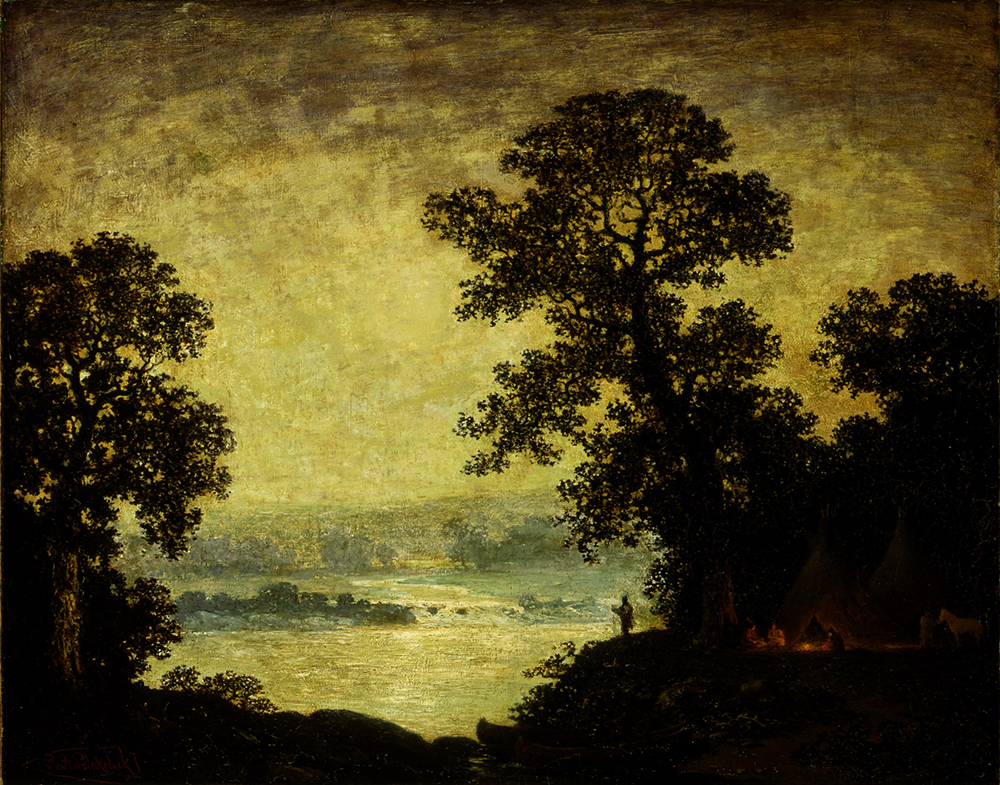
Night also offers choice. You can refuse sleep—an ecstasy that has a strong taste, for me that of ginger and mango and sea urchin. To stay awake is to cheat the undaring, ungenerous day, to steal some of its time. In a sense, it is to cheat night as well, since it expects you to sleep.
When with a childlike, but not childish, impatience, I take the soaring darkness as playmate and stay up all night, writing is my activity of choice. I am overcome by the emotions of an outlaw, but until my eyes fall asleep, I forget to surrender.
The alternative I call “half-and-half”: I wake up in the middle of the night, a form of improvisation, since it can’t be planned. The urge to continue work interrupted by day’s end will cause me to suddenly awaken and impatiently resume action. For example, yesterday at four am I refined a magic trick that had left me frustrated the evening before.
By not sleeping much, I use night to my advantage. She becomes an accomplice. The outcome? Results are always excellent. But like grabbing a club thrown by an invisible juggler, when night signals me to enter sleep I catch its request and usually comply, respecting Francis Quarles’ advice: do not tire the night in thoughts.
Dancing with night and sleep, the style I favor is a two-step that has me sleep, yet work in my sleep. I let my mind explore and conquer. Invariably, it performs incredible tasks, proving how sound is the sixteenth-century English proverb “Night brings counsel.” The brain areas that restrict our thinking to the familiar and logical are much less active during REM sleep. I take advantage of this. I solve problems in my sleep.
The recipe is simple: as I am about to fall asleep, I place one unsolved problem, one only, under my pillow. Once dormancy has sheltered my mind from the outside world, my subconscious takes over and decides on the right direction to travel. The solution sails from outer space into my whirling inner space. When the motion stops, it wakes me up. My eyes open. I must immediately jot down the solution my unconscious holds at its fingertips (for that purpose, pad and pencil await on my bed table) or else the whole thing evaporates in the moonlight.
But night is too mighty for man to dare impose a preference, a direction, even the hint of timing, to its whims. I accept what comes and I wait. Once I receive night’s donation (often in the form of something visible, an image, a painting, a moving scene), I answer in echo the scent of a preference—for one particular color, for instance. My invitation must have the delicacy of a hang-glider pilot shifting his weight slightly to induce an imperceptible change of directions—God willing and winds of night cooperating. Because if smelling disrespects, night might gather her brushes, roll her canvas, and abandon the studio without warning.
I now listen to the 1867 composition that Modest Mussorgsky never heard played in his lifetime: Night on Bald Mountain, an orchestral tale of horror, betrayal, violence, and death. The tempestuous score brings forth Goya’s dark engravings of deformed witches grotesquely dancing. I surrender to the music, to its images, to fear.
Fear of night; loss of control; seeing night as death; fear of dying; fear of short circuit, of electric shock, of torture; fear of the unknown, of otherworldly encounters, of monsters; fear of nightmares.
In my dreams I sleep with everybody.
—Anaïs Nin, 1933Nightmares that impose asphyxia, slow-motion weightlessness, or its opposite, sudden crushing. I’m being blown up like a balloon or I’m being sucked of all of my blood or coerced into a coma. And fear of nightmares within nightmares.
Last night I was sentenced to prison without parole. By accident my cell door had been left ajar. Was it a trap? I tiptoed out along a long corridor, which became a tunnel, which led to further tunnels. I was forced to keep going. As night, in its ghoulish underground, imposes more tunnels (some I am now digging with my nails, like teredos), I arrive at a fork, as if inside Gustave Doré’s illustrations of Dante’s Inferno or an illusion from Escher. Which tunnel to take? I take a guess. If I attempt to retrace my steps, I will be sucked into more tunnels, more dark arteries, hundreds of them, like the red-and-blue cardiovascular charts I was forced to study in anatomy classes.
It is so exhausting to differentiate the real from the imagined in the heart of a nightmare that I am sweating. I am certain there is no way back, yet I fight to dismount from this mare of night. Reading my thoughts, near the end of the thunderous orchestral composition, church bells announce a lull—the storm has passed.
At times night will bite like a vicious hyena and not let go. Think of an alligator tired of fasting, dragging you to the bottom of his swamp to fill your lungs with liquid mud and swallowing you whole and digesting you with no further effort. But as you fight vehemently, know that night cannot, will not, does not wish to annihilate you. She wants to keep you alive for the next nightmare, and the next; and be entertained by your distress, your terror, your fragility.
Do you dream of nightmares? I do.
